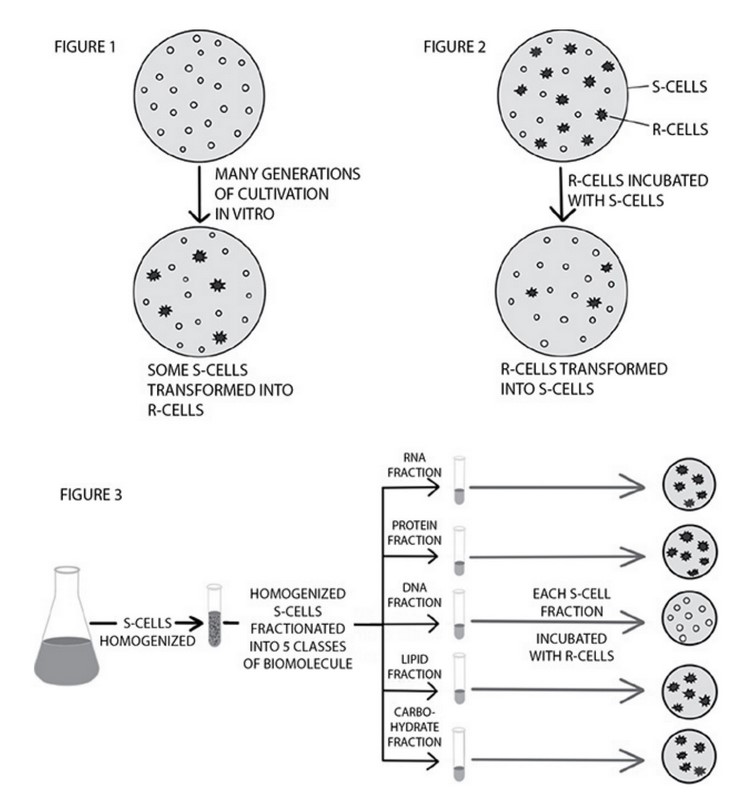Question
One way that organisms respond to changing environmental conditions is through the regulation of gene expression.
(a) Describe the function of operators and promoters in prokaryotes.
(b) Explain how the operator and repressor interact to control the expression of the inducible lac operon.
(c) Bacteria are placed in an environment that has low levels of glucose and high levels of lactose. Predict the level of expression of the lac operon in this environment.
(d) Justify your prediction from part (c).
▶️Answer/Explanation
Ans:
(a) Operators serve as binding sites for repressor proteins. Promoters
are binding sites for RNA polymerase.
(b) When the repressor is bound to the operator, it blocks RNA
polymerase’s access to the structural genes, and the operon is shut
down.
(c) The level of expression of the lac operon will be high.
(d) Lactose is the inducer and will bind to the repressor, removing it
from the operator and allowing the operon to be expressed. Low
glucose levels will lead to high levels of cAMP, which will activate
the catabolite activator protein, increasing the expression of the lac
operon even more.
Question
Refer to a series of experiments involving the bacteria Streptococcus pneumoniae (pneumococcus). There are two strains of S. pneumoniae, the pathogenic S-strain and the harmless R-strain. The S- cells have a smooth appearance due to the presence of a polysaccharide capsule surrounding the cells. The R-cells appear rough because they lack the polysaccharide capsule.
In the first experiment, mice were injected with one of four different solutions containing living R-cells (group 1), living S-cells (group 2), heat- killed S-cells (group 3), or heat-killed S-cells mixed with living R-cells (group 4). The results are given in the following table.
Figure 1 illustrates the results of many generations of cultivation of S. pneumoniae in vitro. Some S-cells lose the ability to make the polysaccharide capsule, transforming them into R-cells (Figure 1). In a separate observation, R-cells grown with S-cells were transformed into S-cells (Figure 2).
The procedure and results of an experiment to identify the class of biomolecule responsible for the transformation of R-cells into S-cells is
shown as follows in Figure 3. S-cell homogenates were fractionated into RNA, protein, DNA, lipid, and carbohydrate components. R-cells were
incubated in one of the five fractions.
Describe one possible mechanism by which an R-cell could be transformed into an S-cell after it takes up exogenous (foreign) DNA.
▶️Answer/Explanation
Ans:
The S-cells of Streptococcus pneumoniae (pneumococcus) are usually
surrounded by a gummy polysaccharide capsule with a smooth, glistening appearance when grown on a solid culture medium. The capsule confers
virulence to the bacteria by preventing them from being engulfed by
macrophages and neutrophils in animals. R-cells lack capsules and produce
rough-looking colonies. After many generations of cultivation on an artificial
medium, some S-cells lose the ability to make the capsule and become
harmless.
Uptake of foreign DNA provides the R-cells (including the S-cells that
were randomly transformed into R-cells by losing their ability to make the
capsule) with the genes to make the capsule. Bacteria that can make the
capsule can evade the phagocytes.
Injection of a single S-cell into a mouse will kill it within about 24 hours,
whereas an injection of over 100 million \((1 × 10^8)\) R-cells is harmless. The
R-cells lack the capsule and are therefore completely defenseless against the
phagocytes.
Question
Introducing errors occurs 100,000 times more often in the combined processes of RNA synthesis and protein synthesis compared with
DNA synthesis.
(A) Explain why this does not have a greater effect on phenotype (compared to a similar error in DNA).
(B) Explain why selection did not act as strongly for high-fidelity mechanisms of transcription and translation.
▶️Answer/Explanation
Ans:
RNA is continually synthesized from a DNA template and degraded.
Many copies of the RNA molecule for a particular gene are transcribed when gene expression is activated, but they are all copied directly from the DNA and not from other RNA molecules. Out of many RNA molecules, only one
or a few will likely contain the mutation. Mistakes in a few RNA molecules
are probably not significant to have an effect if not passed on to daughter
cells, and the effect is likely transient since those RNA molecules are
degraded and new ones are synthesized from the DNA template.
The DNA is the template for all RNA molecules. If the nucleotide
sequence in a protein-coding region has a mutation, every RNA transcribed
from that DNA sequence will have the complementary mutation. The DNA is
not typically degraded, particularly in dividing cells. All progeny cells would
receive the mutated sequence, an incorrect copy of the gene.
